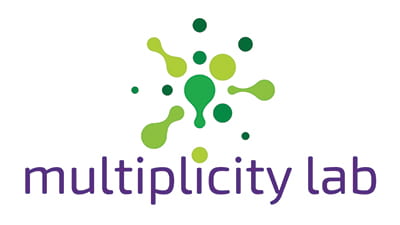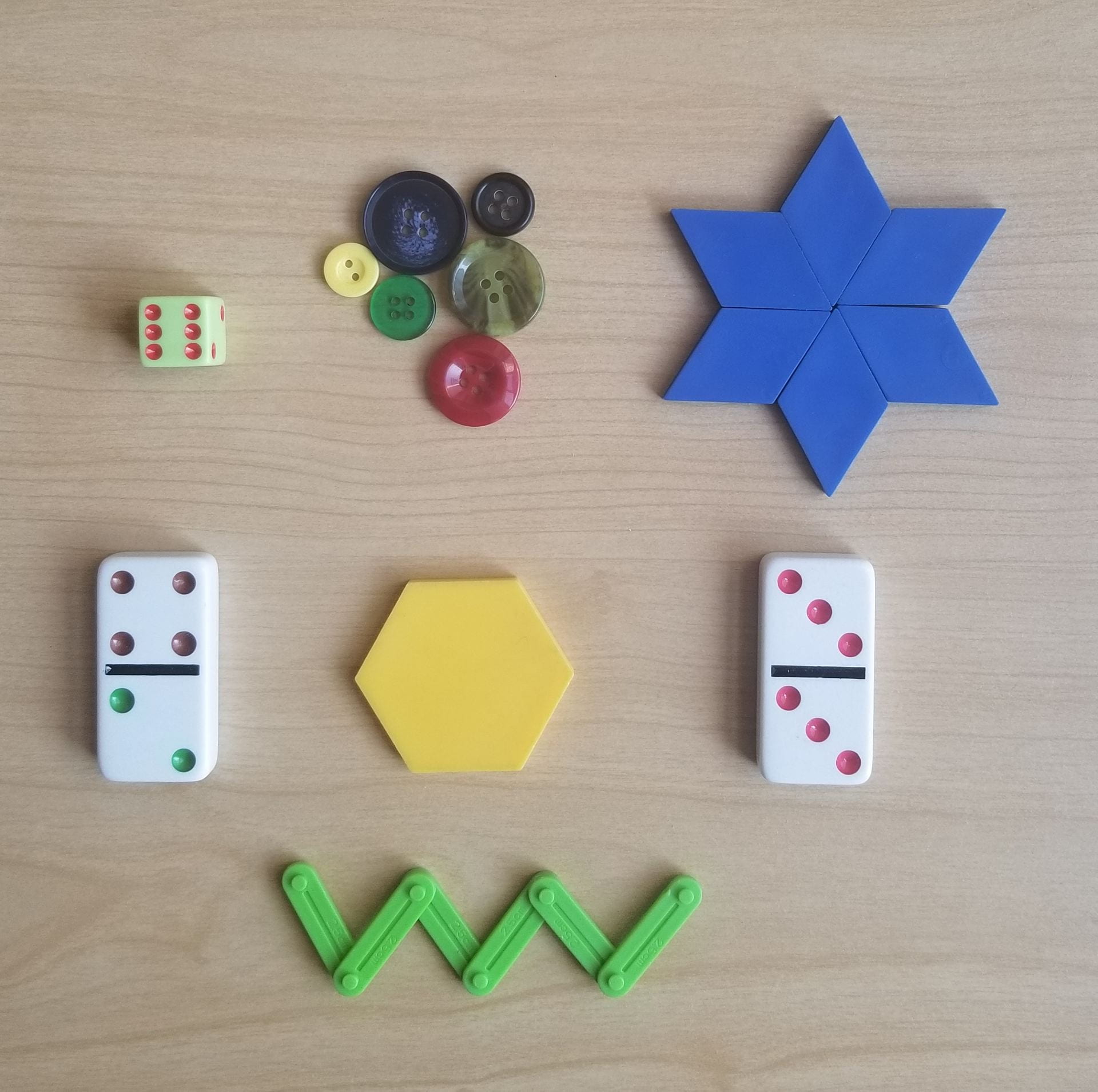Image of the Week: Connecting Representations
February 20, 2022Connecting Representations
Have a look at our image of the week: What do you notice? What do you wonder? This image is different than many that we’ve created because it is designed to a single concept – here the number 6 – in multiple ways. Seeing multiple representations of the same concept supports students in understanding what is essential about that concept. This is the idea that undergirds all of multiplicity lab’s activities. Here we don’t tell students what they should see but invite them to notice and wonder and stumble on connections.
If you work with young students, those who are developing ideas about quantities and the ways we represent them, then this image can provide a lot to talk about. Students are likely to focus on parts of the image first, and through discussion begin to see connections. They might recognize the die as showing 6, or count the 6 buttons or parallelograms. The dominoes show to different ways to compose 6: 4 and 2, and 3 and 3. The hexagon can be seen as one, or as being bounded by 6 sides. Finally, the zigzag at the bottom is built from 6 Geostix, but also shows 7 dots or vertices. Six can look like many things. It can be a lot – to roll a six is to get the most possible. Or it can feel small – six pattern blocks make only a very small pattern. Seeing these – and other – representations helps students deepen their ideas about six.
As an extension, invite students to create their own collections of six, and, if possible, take photos like this one. Students may begin to notice six throughout their world, from snaps on their coats to shelves on a bookcase.
What if I teach much older students? This same strategy can be useful regardless of the concept – whether it is six or congruence or right angles. Either you can construct a collection and invite students to notice and wonder about it, as we’ve done here, or try one of our Off You Go activities, where students themselves create the collections and you lead a discussion about what they found.
And we invite you to follow us on Twitter! Tweet us the fascinating ideas you students have about our activities or how you’re trying these activities in your space. We can’t wait to hear from you!
To multiplicity, cheers!
Jen Munson and the multiplicity lab group
Read the Archive
Get the Image of the Week
Each week we bring you a new image and activity you can do with your students tomorrow, and we spotlight a feature of the mathematical work that we think is important for students’ learning and your teaching.
Stay connected and see what's new.

